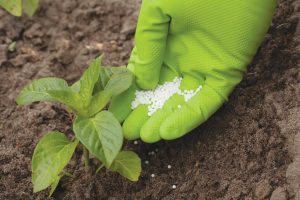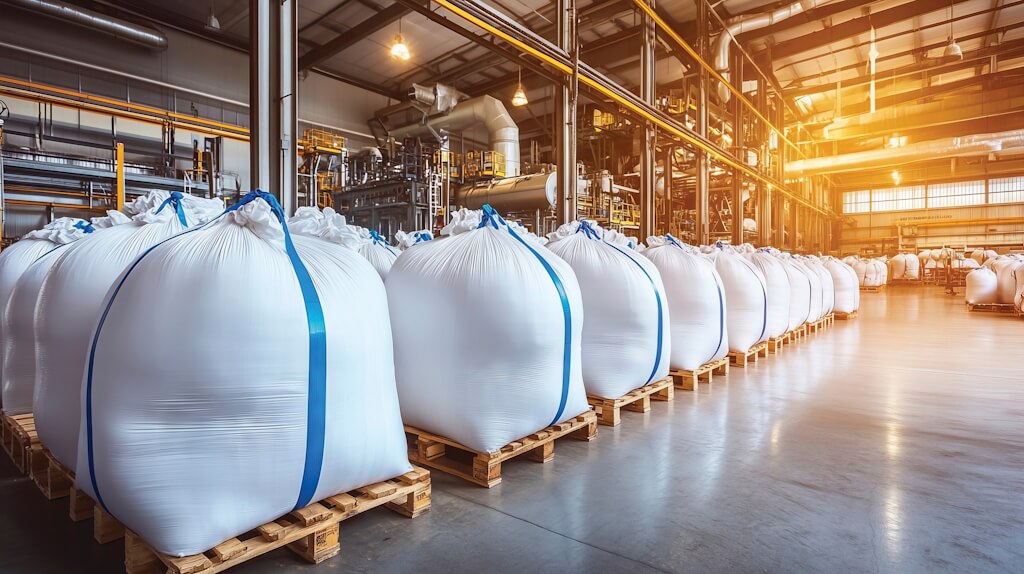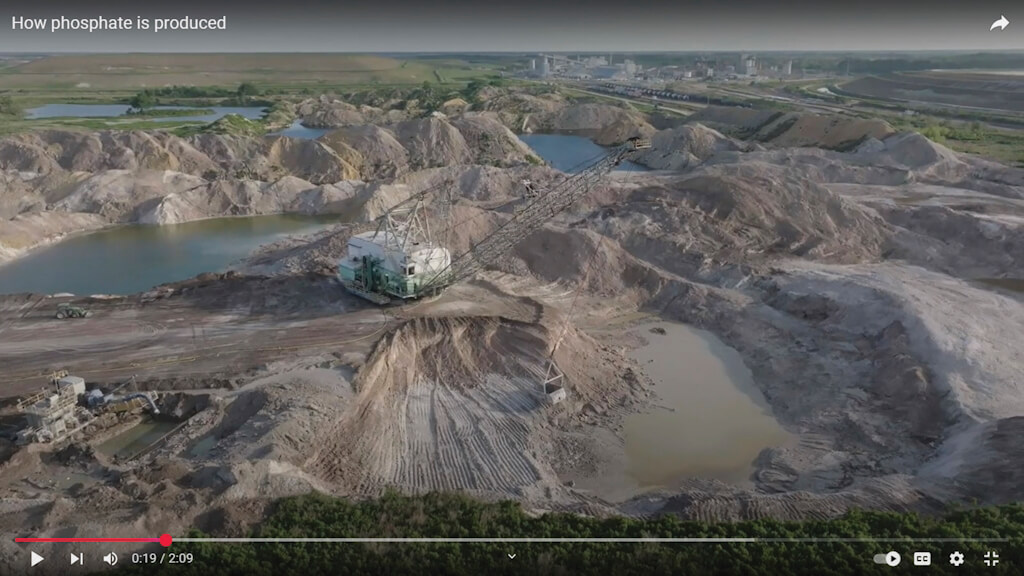A compact news update from Ma’aden about investments in a phosphate fertilizer project in Saudi Arabia recently caught SSW’s attention, prompting desk research into how such fertilizers are produced. The standard process relies on aggressive chemicals hence a wide range of corrosion resistant alloys are normally required, especially when considering the likelihood for contamination. And, with global food consumption on an upward trend, demand for such fertilizers seems set to grow.
By KCI Editorial

Production chain
The production chain for most commercial phosphate fertilizers starts with phosphate rock. Significant reserves of high-quality phosphate rock can be found in Morocco, China and US, making these countries the most important suppliers in the phosphate industry. The extracted rock is first ground before being passed through recovery units to mechanically separate out sand, clay and other impurities. In the US, this process is often referred to as phosphate beneficiation.
The crushed, concentrated phosphate rock is then mixed in a reactor with sulphuric acid. The two react to form a weak phosphoric acid. This particular step is widely known as the wet phosphoric acid process – WPA for short. As an aside, engineers may refer to the actual breaking down of geological matter using acids as digestion.
The weak phosphoric acid (40-55%) thus produced can then be used as the starting point to produce solid and liquid phosphate fertilizers (see box below). SSP is the easiest to produce: the semi-solid resulting from the phosphate rock / sulphuric acid reaction is simply allowed to cool and cure. It is then milled and screened to the appropriate size.
Today, MAP and DAP are the most popular phosphate fertilizers as they are both economical and have a high nutrient content. These fertilizers are produced by a subsequent reaction between ammonia and the weak phosphoric acid derived from the WPA process.
Phosphates vs phosphorus
Phosphates are a naturally occurring form of the element phosphorus. Together with nitrogen and potassium, phosphorus is one of the three primary nutrients required for photosynthesis and crop growth.
A quick guide to phosphate fertilizers:
MAP = mono-ammonium phosphate
DAP = di-ammonium phosphate
SSP = single superphosphate
TSP = triple superphosphate
A growing segment
To give a sense of perspective, data available from Market Research Future(1) valued the 2024 global phosphate fertilizer market at around USD 70 billion and forecasts growth to some USD 125 billion by 2034, with a CAGR of 5.9%. Market drivers include global population growth, global conflict (which creates food insecurity), a decline in the quality of agricultural land, the rising demand for alternative foodstuffs, as well as government initiatives promoting the use of so-called ‘NPK fertilizers’ (nitrogen, phosphorus, and potassium). Moreover, as harvesting crops effectively removes more phosphorus from the soil than can be naturally replenished, commercial fertilizers are essential to maintain food output.
Materials research

A recent technical article by Simbarashe Fashu and Vera Trabadelo (both from the Mohammed VI Polytechnic University, Benguerir, Morocco) gives an excellent review on the development, performance and selection of stainless steels and nickel alloys for the WPA process(2).
In the introduction, the authors indicate that nickel alloys and stainless steels are attractive construction materials for the WPA process due to their superior mechanical and chemical integrity, toughness, ductility, versatility and easiness to fabricate.
In the section on performance and selection of stainless steels and nickel alloys, they discuss the results of testing materials in various areas of the process. For example, they state that austenitic stainless steels 904, 316 and 317 quickly corroded in reactor vessel environments and that high nickel contents are required for alloys to withstand stress corrosion cracking. Later, when reporting on applications such as tube heat exchangers and circulation pumps in the concentration evaporators, they note that alloys with a high chromium content deliver superior corrosion resistance whilst high molybdenum levels seem less important.
The acidulation (WPA) process, where sulphuric acid is added to the crushed and refined ore, typically takes place in concrete reactors lined with acid-resistant bricks. The sulphuric acid is fed into the reactor using both pipes made of 316L (for exterior pipework) as well as alloy C-276 pipes (used when entering the reactor).
One of the most challenging applications is the agitator assembly, due to the combination of extremely corrosive and erosive conditions.
Fortunately, agitators are simple to replace so materials with average lifetimes are acceptable. Hence alloys such as 316, 317 and 904L can be considered, unless the conditions are particularly aggressive. The authors add that rubber-coated austenitic stainless steel has been used but deemed to be ineffective due to high wear rates which required frequent repairs.
Filtration is another area for attention. Whilst temperatures in this area are low, challenges include high chloride concentrations, erosion, the presence of deposits, stagnant solutions and high mechanical loading. The fact that filtration units are large and expensive to replace therefore promotes the use of materials with longer lifetimes. Hence grades such as 316L and 317L are commonly used, with duplex stainless steels such as 2205 and alloy 28 frequent selections for plants with even higher severity.
A shift to renewable resources?
With demand for phosphate fertilizers on a strong upward trend, there is growing interest in many areas – and especially in Europe – to develop alternative raw materials sources. For example, by recycling biological waste. This will reduce pressure on the use of phosphate minerals which are classified as critical raw materials, indicating that there could be an imbalance between supply and demand in the years ahead.
The basic principle to recycling biological waste is to extract phosphate salts from sludge or sewage which can then be used to prepare phosphate fertilizers. Manure or fermentation residues from biogas plants are also valuable feedstocks, as in addition to phosphorus they can contain valuable materials such as nitrogen and potassium compounds which are also beneficial for plant growth.
Corrosivity
The complexity and variation in materials selection as discussed by Fashu and Trabadelo are also stressed by the Nickel Institute in their guide to alloy selection in the WPA process(3). They note for example that during phosphate rock digestion, the presence of impurities, such as fluorides and chlorides, can significantly increase corrosivity. Oxidizing compounds may also be present. So whilst alloys such as chromium-containing nickel alloys, austenitic stainless steels, and duplex stainless steels may be considered for general phosphoric acid systems, critical areas of the wet-process (where chloride contamination significantly increases corrosion of Type 316L stainless steel) could require more highly alloyed stainless and nickel-rich alloys.
Meanwhile, specialized steel mills such as Industeel offer dedicated products for use in challenging areas such as concentrated acids(1). For example, UR™ 32615 (Cr 17%, Ni 19.5%, Mo 0.4%, Si 5%) has been developed to provide a superior corrosion resistance in highly concentrated hot sulphuric acid. With 5% silicon to provide an enhanced corrosion resistance in sulfuric acid, this grade is understood to have good mechanical properties, good weldability and also to be resistant in concentrated nitric acid.

Ma’aden’s investments
Turning back to the original press release, this referred to the signing of three construction agreements worth over USD 922 million by Saudi Arabian Mining (Ma’aden) for its third phosphate fertilizer project in Wa’ad Al Shamal and Ras Al Khair. The agreements include a USD 363 million contract with China based Sinopec Nanjing Engineering & Construction for acid production units and related infrastructure at Wa’ad Al Shamal.
A USD 234 million agreement has been reached with Turkey’s Tekfen Construction for construction of a beneficiation plant at Wa’ad Al Shamal. And finally, a USD 325 million contract is in place with the China National Chemical Engineering Company for general construction works at the Ras Al Khair facility.
Ma’aden first announced its third project for manufacturing phosphate fertilizers back in 2016, estimating the project’s total cost at USD 6.4 billion. The complex is set to increase the company’s annual production capacity by 50% to 9 million tonnes. In October 2018, Ma’aden signed a USD 892 million engineering, procurement, and construction with a global consortium to build the first of several plants believed to fall under this project, namely an ammonia plant with 1.1 million tons per annum capacity.
From rock to fertilizer
A two-minute video that nicely overviews how phosphate rock is mined, refined and converted into fertiliser is available on YouTube, courtesy of Nutrien’s White Springs, Florida phosphate site. https://www.youtube.com/watch?v=L5Ysw7b40tE
Recent phosphate project announcements
![]() January 2025: First Phosphate announces filing of PEA Technical Report for the Bégin-Lamarche Phosphate Project in Quebec, Canada. The report provides a potentially viable case for developing the property by open pit mining. The project would produce an annual average of 900,000 tonnes of beneficiated phosphate concentrate at 40% P2O5 content and 380,000 tonnes of magnetite at 92% Fe2O3 content over a 23-year mine life.
January 2025: First Phosphate announces filing of PEA Technical Report for the Bégin-Lamarche Phosphate Project in Quebec, Canada. The report provides a potentially viable case for developing the property by open pit mining. The project would produce an annual average of 900,000 tonnes of beneficiated phosphate concentrate at 40% P2O5 content and 380,000 tonnes of magnetite at 92% Fe2O3 content over a 23-year mine life.
January 2025: several news outlets report that Asia-Potash has plans to create a phosphate fertilizer complex in Egypt. Asia-Potash could well invest up to USD 10 billion, with an initial phase expenditure of USD 1.6 billion for the annual exploration and extraction of two million tonnes of phosphate rock. Following conversion, all phosphate fertilizers to be exported to neighbouring markets.
December 2024: Minbos signs a civil construction contract for the Cabinda Phosphate Fertilizer Plant in Angola. This will advance the installation of the fertilizer plant (currently in storage) which includes a phosphate ore storage area, production facility, rotary dryer, dust collection system and a product storage area.
Ma’aden’s existing phosphate businesses
Ma’aden is the largest multi-commodity mining and metals company in the Middle East and among the fastest-growing mining companies in the world(5). 2023 revenues were USD 7.12 billion. Ma’aden is developing the mining industry into the third pillar of Saudi economy in line with Vision 2030. The company operates 17 mines and sites, has 6,000+ direct employees and exports products to over 30 countries. Ma’aden has plans for massive growth over the next 18 years across its phosphate, aluminum, gold, copper and new minerals activities, to leverage the Kingdom’s estimated USD 2.5 trillion mineral endowment.
Ma’aden has investments in several phosphate-related companies and activities. These include MPC (Ma’aden Phosphate Company), a USD 5.6 billion joint venture investment. It operates from two primary locations. Firstly Al Jalamid in the Northern Province of Saudi Arabia, where the phosphate mine (11.6 million TPA) and beneficiation plant (5 million TPA) are located. Here, Ma’aden has made significant infrastructure investments, building a power plant, a potable water production plant, communication facilities, a road network, etc. From Al Jalamid, concentrated phosphate rock is transported by rail over 1,200 Km to Ras Al Khair Industrial City for processing at Ma’aden’s integrated fertilizer production complex. Facilities here include a phosphoric acid plant, sulphuric acid plant, ammonia plant, di-ammonium phosphate (3 million TPA), granulation plant and desalination plant.
An additional investment is MWSPC (Ma’aden Wa’ad Al Shamal Phosphate Company), a USD 8 billion joint venture. Located in the Northern Province of Saudi Arabia, this fertilizer production complex features seven world-class plants and associated facilities, including beneficiation plant, phosphoric acid plant, sulfuric acid plant, di-ammonium phosphate, granulation plant. MWSPC can produce 3 million tons of fertilizer products per annum.
About this Tech Article
Appearing in the April 2025 issue of Stainless Steel World Magazine, this technical article is just one of many insightful articles we publish. Subscribe today to receive 10 issues a year, available monthly in print and digital formats. – SUBSCRIPTIONS TO OUR DIGITAL VERSION ARE NOW FREE.
Every week we share a new technical articles with our Stainless Steel community. Join us and let’s share your technical articles on Stainless Steel World online and in print.


